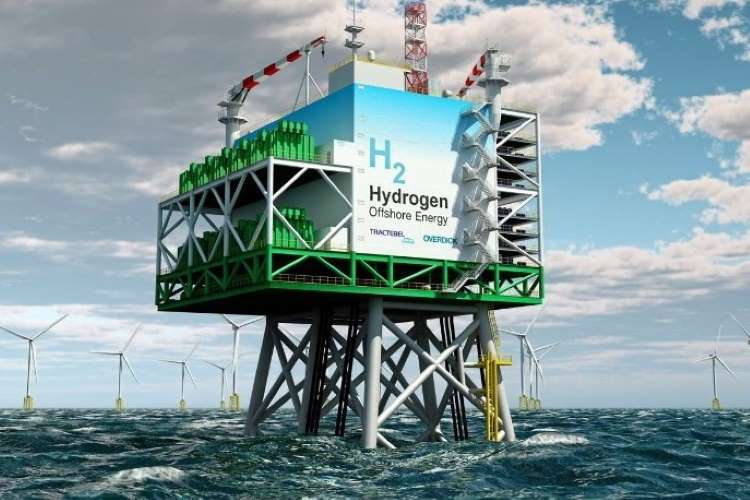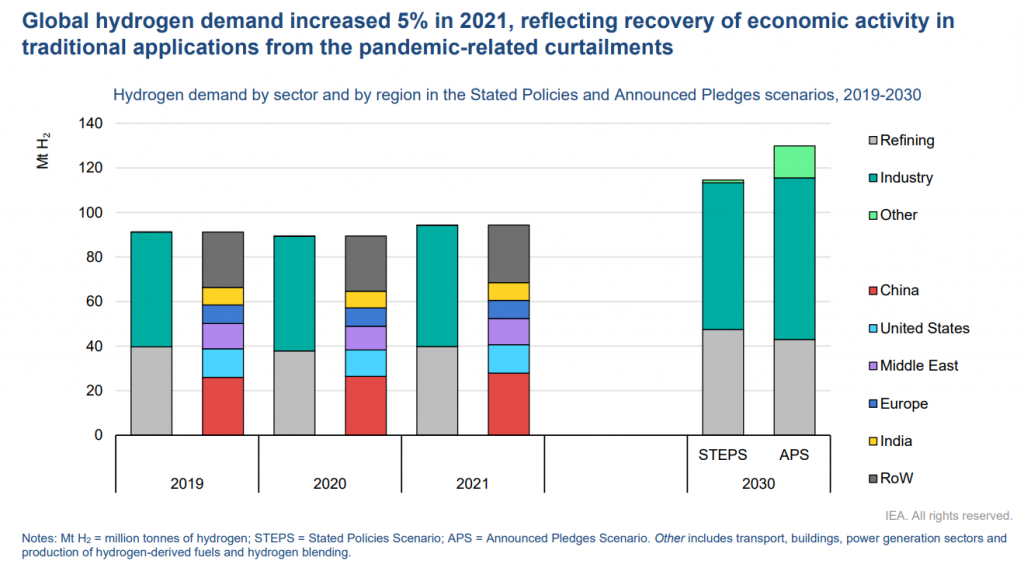
Green hydrogen has emerged as a promising solution to address the challenges of reducing greenhouse gas emissions and transitioning to a sustainable energy future. But commercial production of this clean fuel facer several challenges. This article is an attempt to analyse the current state of green hydrogen production, technological advancements, environmental benefits, and the role of various stakeholders in driving this transformative energy transition.
The global shift towards sustainable energy sources has ignited interest in green hydrogen as a clean and renewable alternative. Green hydrogen, produced through electrolysis of water powered by renewable energy sources, presents numerous opportunities to revolutionize various sectors, such as transportation, power generation, and industry. However, despite its immense potential, commercial production of green hydrogen is faced with both promising opportunities and significant challenges. This analysis article delves into these dynamics by drawing insights from four pivotal reports.
READ I India’s sustainability quest: From desirable goals towards achievable ones
Opportunities in green hydrogen
As a clean and renewable energy source, green hydrogen can play a pivotal role in reducing greenhouse gas emissions and fostering a low-carbon economy. Its versatility allows for applications in transportation, power generation, and industrial processes. The rising demand for green hydrogen is underscored by the global transition towards sustainable energy solutions, attracting interest from governments and investors alike. The commercial potential of green hydrogen is poised for exponential growth as technology matures and economies of scale are achieved.
The primary obstacle is the high production cost, though this is anticipated to decrease with technological advancements and increased production scale. Additionally, the nascent infrastructure for producing, storing, and transporting green hydrogen requires substantial development. Determining the most cost-effective renewable energy sources for green hydrogen production poses another challenge. Environmental concerns, such as water usage and waste disposal, further underline the need for responsible and sustainable practices. Addressing these challenges is pivotal to realizing the full potential of green hydrogen.

Breakthroughs in industrial production
The inauguration of Chile’s first industrial-scale green hydrogen plant is a major breakthrough in the quest for clean energy. With an investment of $15 million, this plant exemplifies the growing commitment of industry players to adopt green hydrogen technology. The use of green hydrogen in replacing lead-acid batteries in forklifts reflects a practical and actionable step towards reducing carbon emissions. The presence of high-profile figures, including government representatives and corporate leaders, underscores the significance of this achievement and the alignment of stakeholders towards decarbonization goals.
Another breakthrough – a solar-driven water splitting device that achieves record-breaking efficiency — integrates halide perovskite semiconductors with electrocatalysts to achieve a remarkable 20.8% solar-to-hydrogen conversion efficiency. The device’s scalability, durability, and cost-effectiveness present a promising platform for clean energy production. Overcoming challenges related to semiconductor stability in water and achieving high efficiency without solar concentration underscores the potential impact of this technology on the green hydrogen landscape.
A groundbreaking solar-powered green hydrogen project in China and Saudi Arabia unveils the synergy between solar energy generation and green hydrogen production. A 2.2 GW solar plant will power an $8.7 billion green hydrogen plant, positioning the Middle East as a key player in the green hydrogen market. The commitment to carbon-free hydrogen production using renewable energy sources demonstrates the ambition to meet global decarbonization targets.
Towards a sustainable future
The adoption of green hydrogen is a journey marked by both promise and challenges. The clean fuel has great potential and environmental virtues, but the technologies are at nascent stage to have a definite impact on the global energy mix. In the realm of sustainable energy solutions, green hydrogen has the capacity to mitigate greenhouse gas emissions. A chorus of global attention, spanning governments to investors, underscores its strategic role in driving the transition to cleaner energy. Yet, this symphony reverberates against a backdrop of complexities that beckon innovative resolutions.
The obstacle of production costs looms as a challenge that demands strategic solutions. Though anticipated technological advancements and economies of scale offer optimism, the cost factor remains substantial. The intricate web of infrastructure, spanning production, storage, and distribution, necessitates careful navigation to establish a seamless green hydrogen ecosystem. The pursuit of the most efficient and eco-friendly renewable energy sources casts a pivotal vote in steering the course toward optimal production.
Recent strides signal green hydrogen’s ascendancy, casting shadows aside. The successful establishment of industrial-scale projects, harmonizing stakeholder collaboration, represents a triumphant note in the journey towards sustainability. Noteworthy technological breakthroughs, exemplified by groundbreaking advancements, enkindle the prospect of a new epoch in clean energy production. These accomplishments serve as a testament to the potential of human ingenuity and cooperation.
Global dynamics unfurl as nations interlink their aspirations with sustainable energy goals. As investment and ambition align, the orchestration of carbon-free hydrogen production resonates as a symphony that bridges economic and environmental harmony.
In the culmination of this discourse, a pivotal juncture emerges—a delicate interplay between aspiration and adversity. The path to establishing green hydrogen on a commercial scale is undoubtedly strewn with challenges, yet the trajectory forward is undeniably compelling.
The tableau is set for collective endeavour, innovation, and steadfast commitment. Industries, governments, and research communities converge in a collective symphony, steering the narrative towards a future where green hydrogen takes centre stage. With each report, every stride in innovation, and every collaborative effort, we weave our harmonies into this grand narrative, merging opportunities with solutions and challenges with resilience.
(This article has been written with artificial intelligence inputs.)

